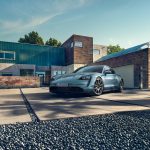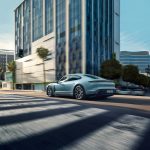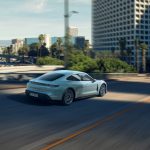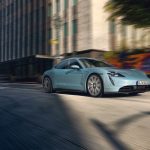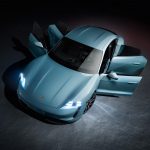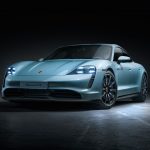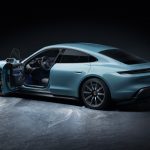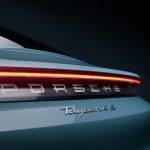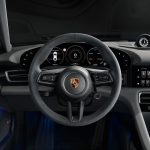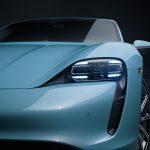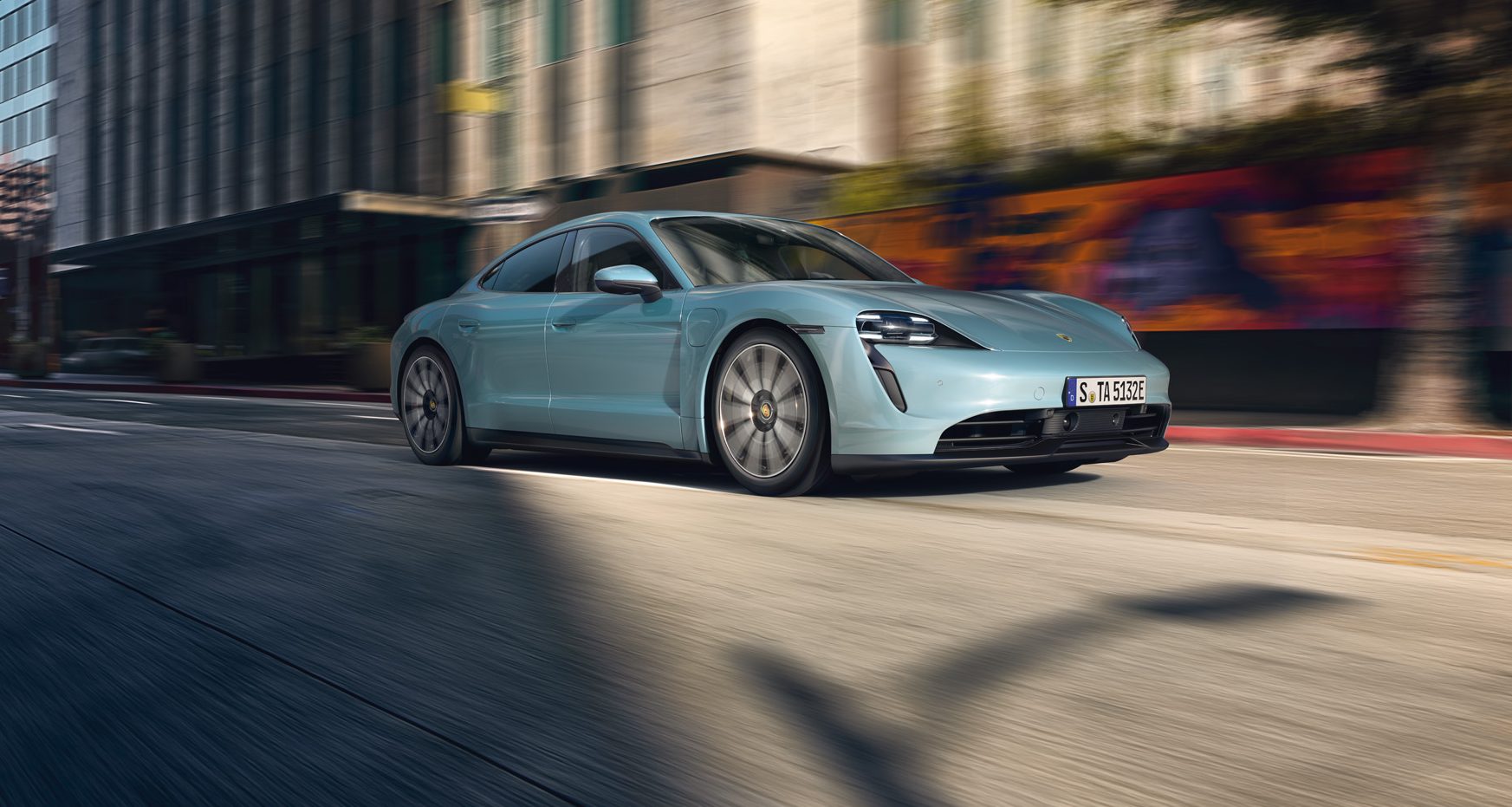
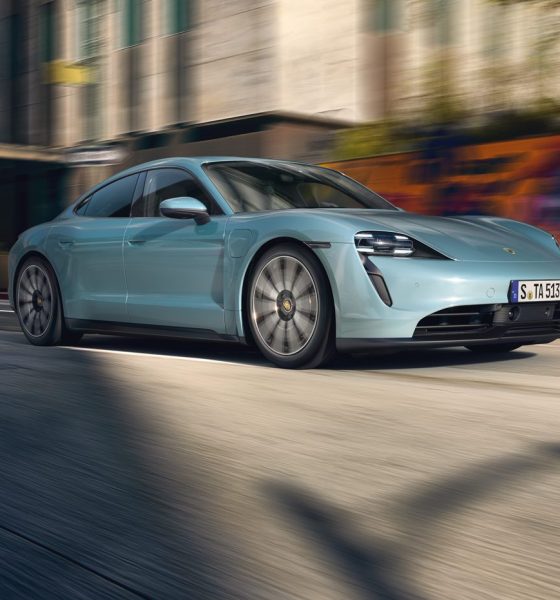
News
Porsche releases Taycan 4S: Price, performance, battery options, and more
Just over a month after launching the first two variants of the Taycan, Porsche has announced another version of its flagship all-electric sports car, the dual-motor Taycan 4S. Priced below the Taycan Turbo, the midrange variant of the electric sports car could very well hit the sweet spot for buyers who prefer to have the full Porsche experience without spending over $150,000.
Here’s a quick look at the Porsche Taycan 4S’s details.
Design and Battery Sizes
A look at the Taycan 4S shows that the vehicle is just as stunning as the Turbo and Turbo S variant that preceded it. The Taycan 4S’ dimensions are identical to the vehicle’s top two versions, though its wheels are a touch smaller at 19″ compared to the Turbo’s 20″ and the Turbo S’ 21″ wheels. The 4S is also equipped with red six-piston fixed-calipers on the front axle and four-piston calipers on the rear axle with internally vented cast-iron brake rotors.
The Taycan 4S will be released with two available battery sizes: the standard Performance battery that delivers up to 522 hp (390 kW) and the Performance Battery Plus that up to 563 hp (420 kW). The Performance Battery has a capacity of 79.2 kWh as standard, while the Performance Battery Plus features the same 93.4 kW battery that is fitted on the Taycan Turbo and Turbo S.
- The Porsche Taycan 4S. (Credit: Porsche AG)
- The Porsche Taycan 4S. (Credit: Porsche AG)
- The Porsche Taycan 4S. (Credit: Porsche AG)
- The Porsche Taycan 4S. (Credit: Porsche AG)
The Porsche Taycan 4S. (Credit: Porsche AG)
Performance, Charging, and Interior
Yet despite the differing battery sizes, Porsche notes that the Taycan 4S will have a 0-60 mph time of 3.8 seconds. The top speed of the vehicle is listed at 155 mph. US EPA range estimates for the Taycan 4S are yet to be announced.
Under ideal conditions, the Porsche Taycan 4S could charge from 5% to 80% state of charge can occur in as little as 22.5 minutes for both the Performance and Performance Plus battery, at least when the vehicle is plugged into an 800-volt high-speed DC charging station. The maximum charging capacity (peak) is 225 kW for the Performance Battery or 270 kW for the Performance Battery Plus.
Being part of the Taycan family, the 4S is available with multiple interior options, though Porsche underscores the company’s use of recycled materials for the vehicle. A partial leather interior comes standard with the midrange all-electric car.
- The Porsche Taycan 4S. (Credit: Porsche AG)
- The Porsche Taycan 4S. (Credit: Porsche AG)
- The Porsche Taycan 4S. (Credit: Porsche AG)
- The Porsche Taycan 4S. (Credit: Porsche AG)
- The Porsche Taycan 4S. (Credit: Porsche AG)
- The Porsche Taycan 4S. (Credit: Porsche AG)
The Porsche Taycan 4S. (Credit: Porsche AG)
Price
In a way, the Porsche Taycan 4S could very well be the bang-for-your-buck version of the German automaker’s flagship electric sports car line. Apart from having the same battery size as the Taycan Turbo and Turbo S, the 4S is also equipped with the same Permanent Magnet Synchronous Motor (PSM) as the vehicle’s top two trims.
Granted, the vehicle’s maximum power stands at 563 hp with launch control compared to the Taycan Turbo’s 670 hp and the Turbo S’ 750 hp with launch control, but the vehicle is also priced significantly less. The Taycan 4S with Performance Battery starts at $103,800 ($106,410 at launch), while the 4S with Performance Battery Plus starts at $110,380 ($112,990 at launch).
That’s around $40,000-$46,000 less than the Taycan Turbo, which starts at $150,900 ($153,510 at launch), and over $74,000-$80,000 less than the Taycan Turbo S, which starts at $185,000 ($187,610 at launch).
Here’s a full comparison of Porsche’s current lineup for its flagship electric car.
Porsche Taycan Technical Spec Sheet by Simon Alvarez on Scribd

News
Tesla’s new Holiday perk is timed perfectly to make FSD a household name
Tesla AI4 owners get FSD (Supervised) through Christmas, New Year’s Eve and well into the post-holiday travel season.

Tesla quietly rolled out a free Full Self-Driving (Supervised) trial for roughly 1.5 million HW4 owners in North America who never bought the package, and the timing could very well be genius.
As it turns out, the trial doesn’t end after 30 days. Instead, it expires January 8, 2026, meaning owners get FSD (Supervised) through Christmas, New Year’s Eve and well into the post-holiday travel season. This extended window positions the feature for maximum word-of-mouth exposure.
A clever holiday gift
Tesla watcher Sawyer Merritt first spotted the detail after multiple owners shared screenshots showing the trial expiring on January 8. He confirmed with affected users that none had active FSD subscriptions before the rollout. He also observed that Tesla never called the promotion a “30-day trial,” as the in-car message simply reads “You’re Getting FSD (Supervised) For the Holidays,” which technically runs until after the new year.
The roughly 40-day period covers peak family travel and gatherings, giving owners ample opportunity to showcase the latest FSD V14’s capabilities on highway trips, crowded parking lots and neighborhood drives. With relatives riding along, hands-off highway driving and automatic lane changes could become instant conversation starters.
Rave reviews for FSD V14 highlight demo potential
FSD has been receiving positive reviews from users as of late. Following the release of FSD v14.2.1, numerous owners praised the update for its smoothness and reliability. Tesla owner @LactoseLunatic called it a “huge leap forward from version 14.1.4,” praising extreme smoothness, snappy lane changes and assertive yet safe behavior that allows relaxed monitoring.
Another Tesla owner, @DevinOlsenn, drove 600 km without disengagements, noting his wife now defaults to FSD for daily use due to its refined feel. Sawyer Merritt also tested FSD V14.2.1 in snow on unplowed New Hampshire roads, and the system stayed extra cautious without hesitation. Longtime FSD tester Chuck Cook highlighted improved sign recognition in school zones, showing better dynamic awareness. These reports of fewer interventions and a more “sentient” drive could turn family passengers into advocates, fueling subscriptions come January.
Elon Musk
Elon Musk predicts AI and robotics could make work “optional” within 20 years
Speaking on entrepreneur Nikhil Kamath’s podcast, Musk predicted that machines will soon handle most forms of labor, leaving humans to work only if they choose to.
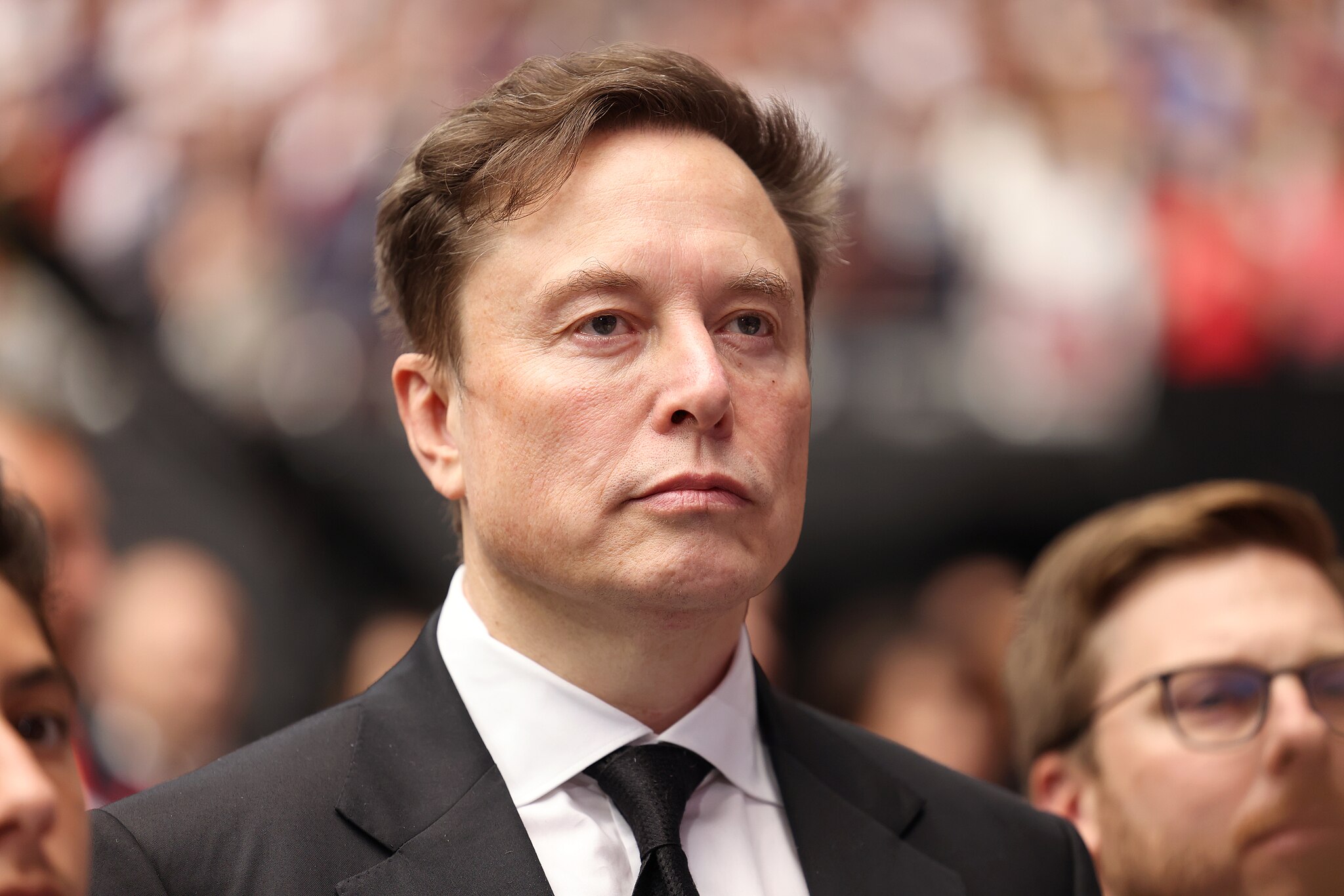
Elon Musk stated that rapid advances in artificial intelligence and robotics could make traditional work unnecessary within two decades.
Speaking on entrepreneur Nikhil Kamath’s podcast, Musk predicted that machines will soon handle most forms of labor, leaving humans to work only if they choose to.
Work as a “hobby”
During the discussion, Musk said the accelerating capability of AI systems and general-purpose robots will eventually cover all essential tasks, making human labor a choice rather than an economic requirement. “In less than 20 years, working will be optional. Working at all will be optional. Like a hobby,” Musk said.
When Kamath asked whether this future is driven by massive productivity growth, Musk agreed, noting that people will still be free to work if they enjoy the routine or the challenge. He compared future employment to home gardening, as it is something people can still do for personal satisfaction even if buying food from a store is far easier.
“Optional” work in the future
Elon Musk acknowledged the boldness of his claim and joked that people might look back in 20 years and say he was wrong. That being said, the CEO noted that such a scenario could even happen sooner than his prediction, at least if one were to consider the pace of the advancements in AI and robotics.
“Obviously people can play this back in 20 years and say, ‘Look, Elon made this ridiculous prediction and it’s not true,’ but I think it will turn out to be true, that in less than 20 years, maybe even as little as ten or 15 years, the advancements in AI and robotics will bring us to the point where working is optional,” Musk said.
Elon Musk’s comments echo his previous sentiments at Tesla’s 2025 Annual Shareholder Meeting, where he noted that Optimus could ultimately eliminate poverty. He also noted that robots like Optimus could eventually provide people worldwide with the best medical care.
Elon Musk
Elon Musk reiterates why Tesla will never make an electric motorcycle
Tesla CEO Elon Musk preemptively shut down speculations about a Tesla road bike once more.
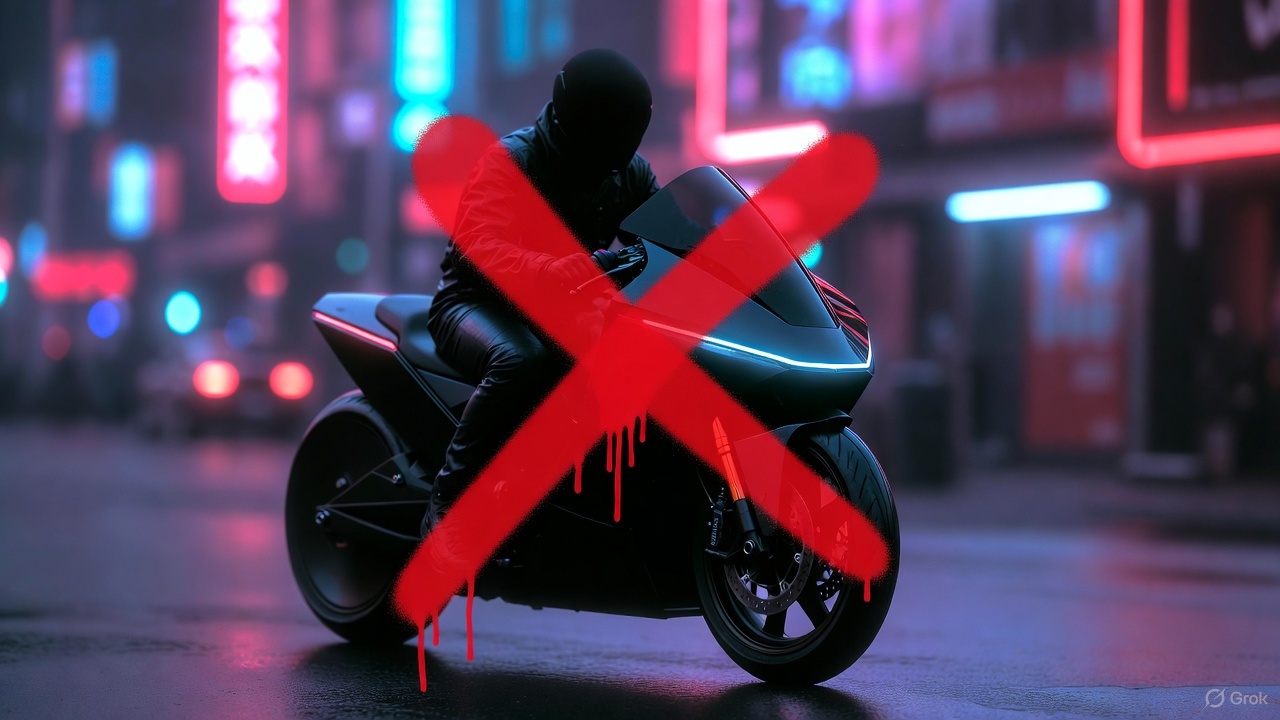
Tesla CEO Elon Musk preemptively shut down speculations about a Tesla road bike once more, highlighting that the electric vehicle maker has no plans to enter the electric motorcycle market.
Musk posted his clarification in a post on X.
Musk’s reply to a fun AI video
X user @Moandbhr posted an AI video featuring the Tesla CEO on the social media platform, captioning it with “Mr. Elon Musk Just Revealed the Game-Changing Tesla Motorcycle.” The short clip depicted Musk approaching a sleek, single-wheeled vehicle, stepping onto it, and gliding off into the distance amid cheers. The fun video received a lot of traction on X, gaining 3.1 million views as of writing.
Musk replied to the post, stating that a Tesla motorcycle is not going to happen. “Never happening, as we can’t make motorcycles safe. For Community Notes, my near death experience was on a road bike. Dirt bikes are safe if you ride carefully, as you can’t be smashed by a truck,” Musk wrote in his reply.
Musk’s Past Comments on Two-Wheelers
Musk also detailed his reservations about motorcycles in a December 2019 X post while responding to questions about Tesla’s potential ATV. At the time, he responded positively to an electric ATV, though he also opposed the idea of a Tesla road-going motorcycle. Musk did state that electric dirt bikes might be cool, since they do not operate in areas where large vehicles like Class 8 trucks are present.
“Electric dirt bikes would be cool too. We won’t do road bikes, as too dangerous. I was hit by a truck & almost died on one when I was 17,” Musk wrote in his post.
Considering Musk’s comments about dirt bikes, however, perhaps Tesla would eventually offer a road bike as a recreational vehicle. Such a two-wheeler would be a good fit for the Cybertruck, as well as future products like the Robovan, which could be converted into an RV.
